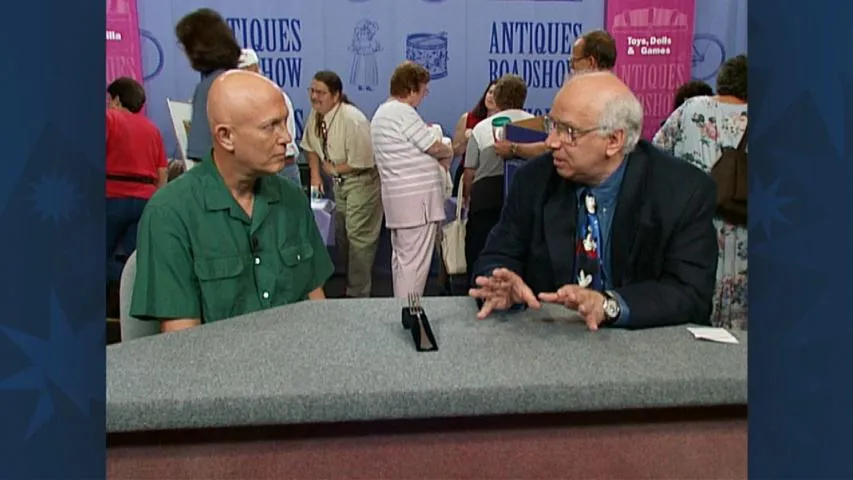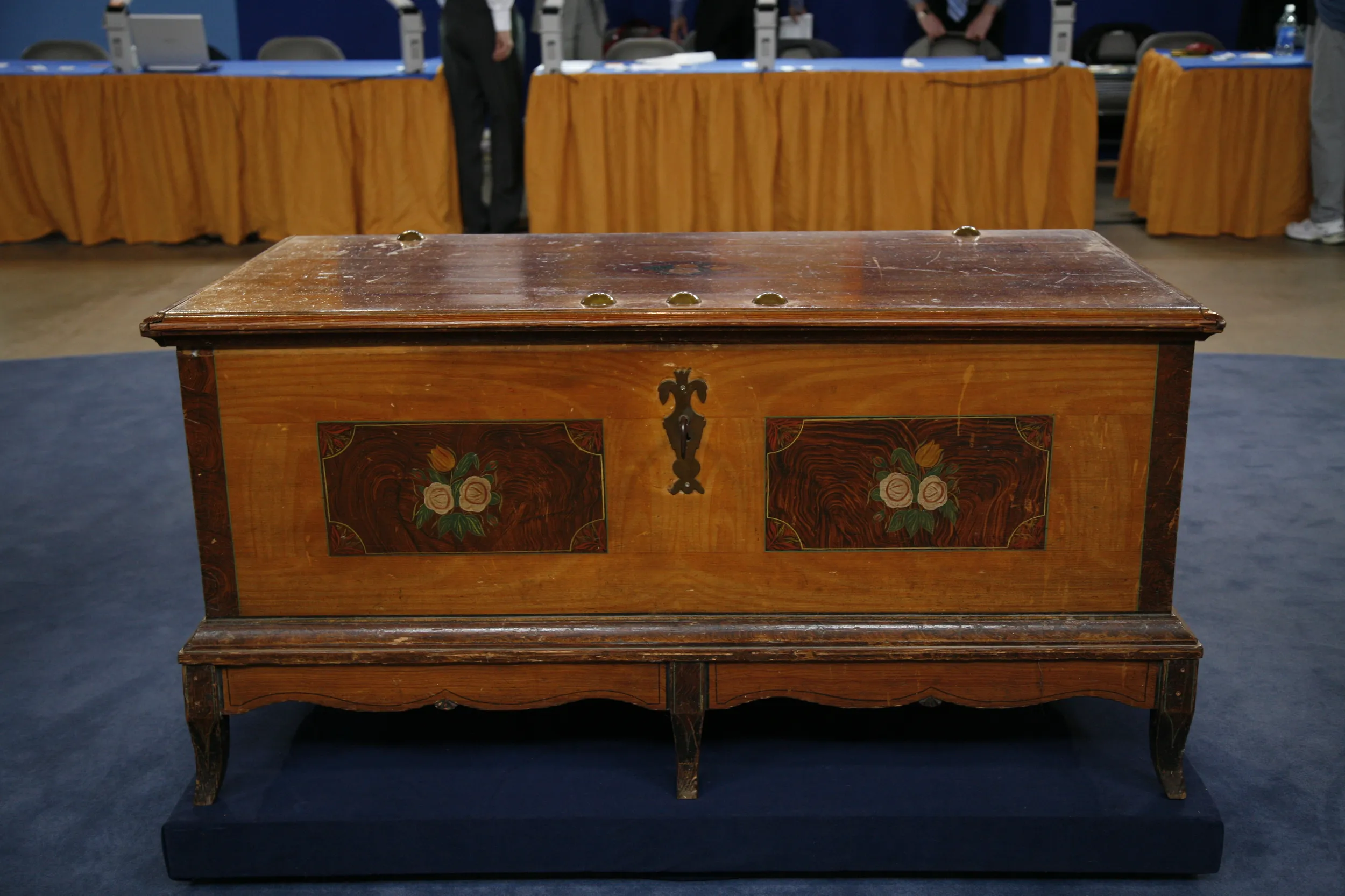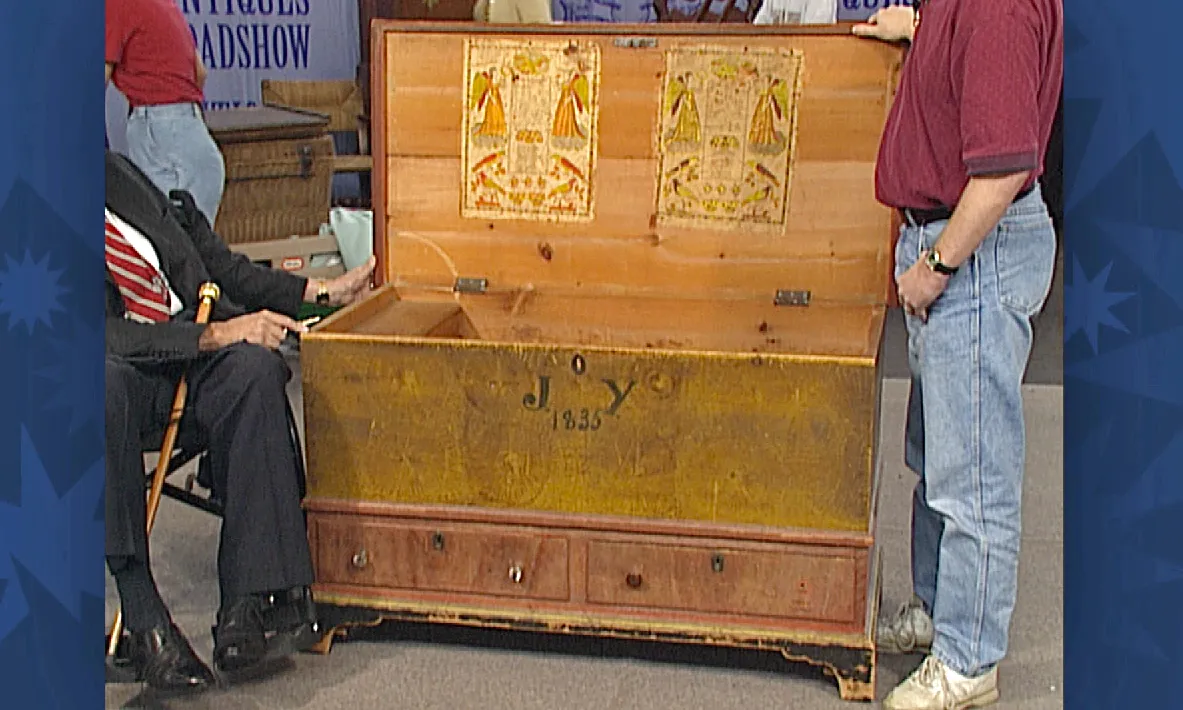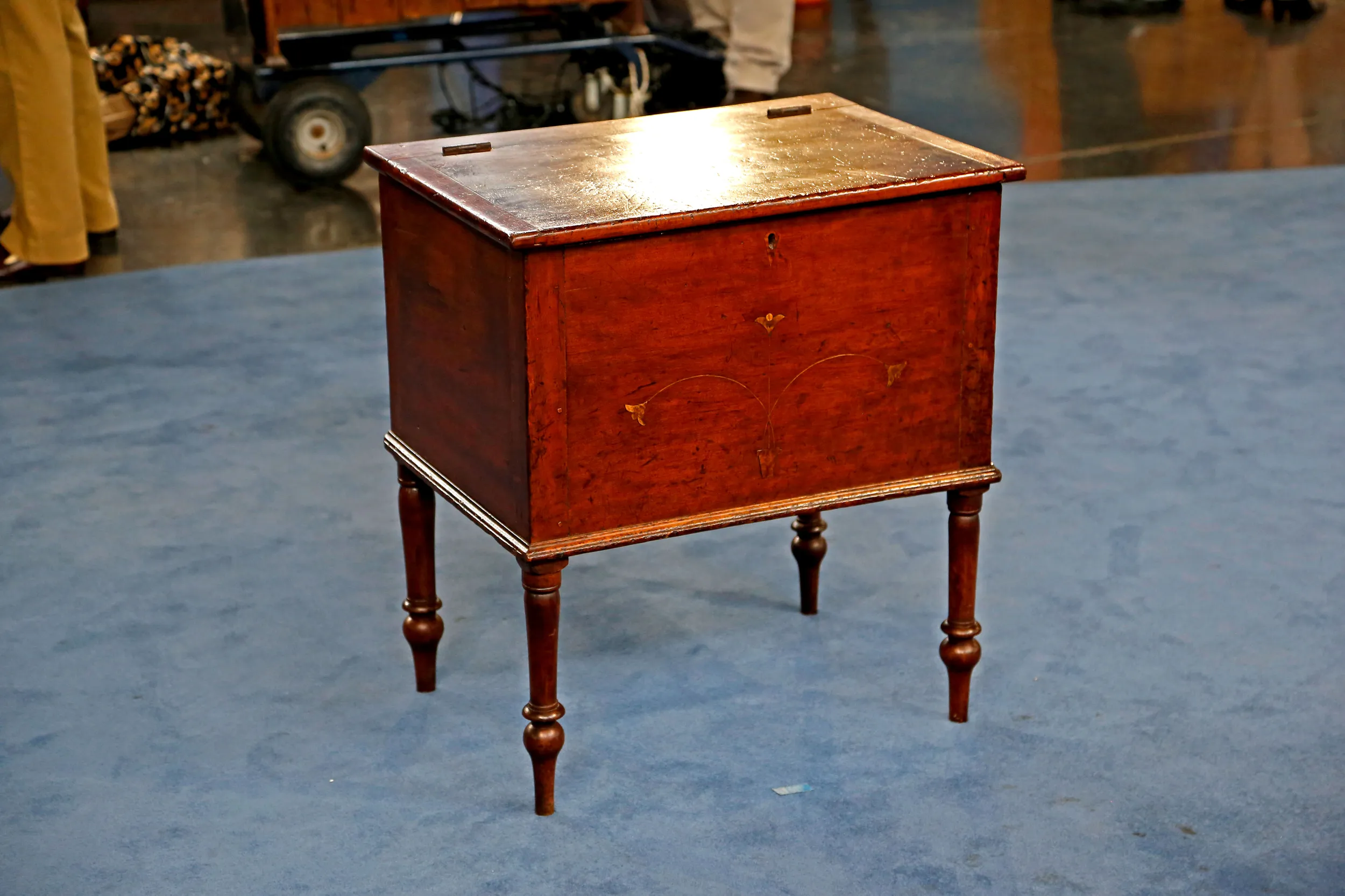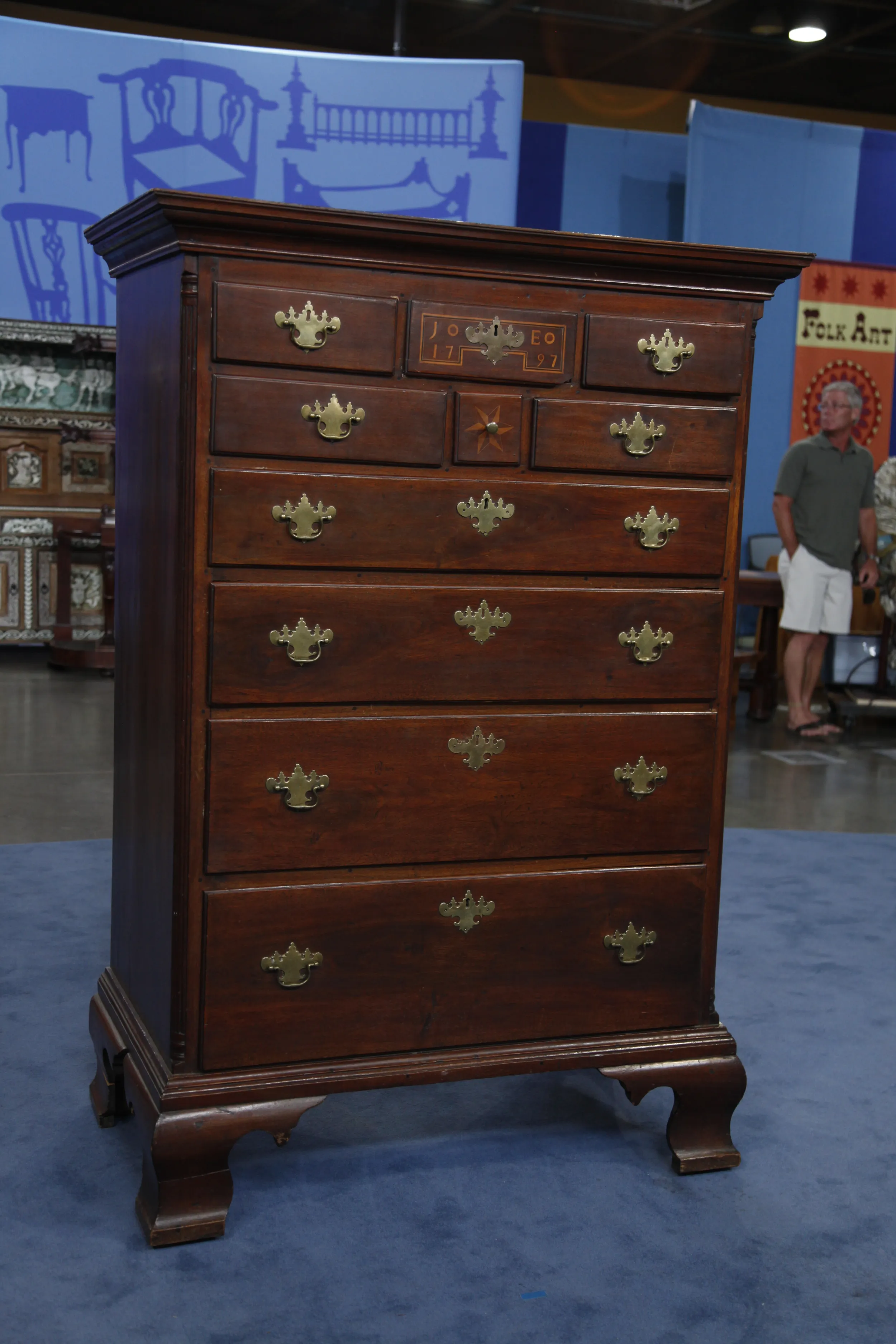GUEST: It was purchased by my mother probably in the very early '50s, and I believe she purchased it from an antique dealer. It was not in the family prior to the early '50s.
APPRAISER: She's done a little research on this piece as well?
GUEST: She kind of looks through magazines and if she spots something that looks similar to something that she has...
APPRAISER: Yeah, yeah.
GUEST: ...she'll cut it out and usually stick it in the drawer.
APPRAISER: Right, right. Well, here's a piece that she's clipped. She's shown us here a chest-on-chest, and one would think that this piece is a chest-on-chest because of the way that it splits here. If we can show them, just opens up here. But in fact, this is a tall chest and was never meant to split. In fact, someone has cut it, at a later date, in half. It's a very typical Pennsylvania tall chest with wonderful figured tiger maple drawers. It has cherry sides to it. The original brasses, beautiful French feet, and you can see that wonderful diamond inlay, so it's a great specimen. Would have been used in a bedroom in the early 19th century. This piece could have been made as early as 1795 in the Pennsylvania area. Not a Philadelphia piece at all, but because of the types of woods that were used in it-- indigenous woods here to the United States-- not the mahogany that you'd normally see in a Philadelphia piece. Now, may I ask you how much you paid for the piece or how much your mom paid for it?
GUEST: I am not 100% sure, but I did, when I was cleaning out the chest prior to bringing it, find a chalked figure in that top left-hand drawer there.
APPRAISER: So we see, uh... $325. Possible, in the 1950s.
GUEST: Yeah, oh, yeah, early 1950s, I would think, yeah.
APPRAISER: This is actually fascinating for me to see this because here is a price tag of $325 purchased from a dealer in the 1950s. As well, there's this very interesting "R-I-E-Z-Z." That is the dealer's code who sold this piece to your mom, and this was the way for him to know in his shop how much he paid for this piece so that when your mom came into the shop and she wanted to wheel and deal with him, she saw the $325 price tag, and he may have paid $125 for it-- zero-zero, with the two "Zs." So the code is a way for him to know his price, and then he can bargain with her because of course a lot of bargaining goes on in this antiques business. So it's a fun bit of history on the way these things have been traded in the past. Now, I think that your tall chest is probably worth a lot more than $325, I would hope at this point. I would think. And I would expect if it were to be brought at auction, we'd probably estimate in the $3,000 to $5,000 range because it's been cut in half. Now, if the piece were actually in one piece we'd be looking at a $10,000 to $15,000 chest of drawers. But in this condition, $3,000 to $5,000.
GUEST: Okay, well, thank you.


